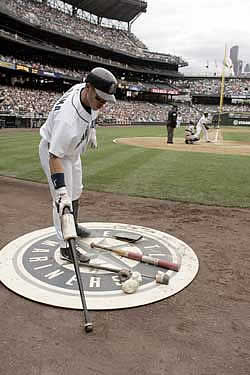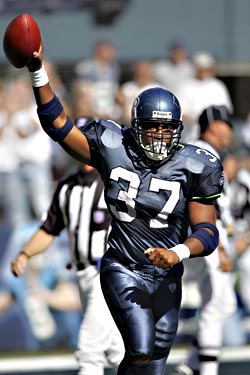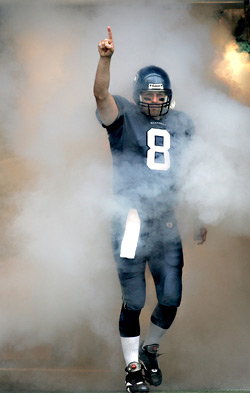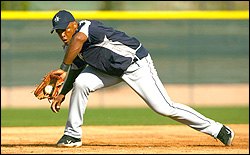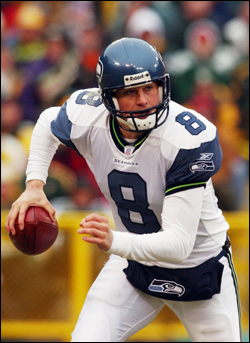“Sitting there the other night for going-on three hours of tedium,” I was recalling for my stat-rat buddy, “what with the quiet spectators, the numbers, signs, and pointless running around, I had plenty of idle time to contemplate ways to help the M’s get better run production.”
“Long baseball games will do that,” he answered as the Seattle Mariners were completing the recent weekend sweep of the San Diego Padres.
“Game, nothin’,” I said. “I was at The Da Vinci Code.” Indeed, all that metaphysical mumbo-jumbo interrupting my slumber practically had me praying for profound revelation. Would Tom Hanks pause from the dogma, hark back to his classic emotive moments, and insist to a distraught Audrey Tautou that “there’s no crying in art museums”?
No, but still there were all those numbers, letters, symbols — hmmm.
“Then it dawned on me,” I continued. “What the team really needs is a new quality index for its position players.”
Instead of going by slugging and on-base percentages, I suggested, the M’s need to apply the letter/number mojo of my patented Scrabble Index: the Holy Grail of baseball information. They’d see that the way to score more would be to place the club’s Scrabble Index stud in the unproductive middle of the lineup. The M’s have scored about the same number of runs as rival Oakland, but the A’s have done it with about a hundred fewer at-bats. In the American League, only the Royals, Angels, and Devil Rays score less with more hits than the Mariners.
Seattle’s Scrabble Index savior: Kenji Johjima, who leads the league’s starting position players with an S.I. rating of 3.5, half a point better than Jose Lopez and a full point higher than Ichiro Suzuki. “Jo” also is known for his pre-swing ritual, touching his bat three times near the plate in trinity imagery that may have been explained during a part of The Da Vinci Code when I wasn’t quite awake. He also scratches something in the dirt near the on-deck circle.
To calculate the index, simply add the total Scrabble points from the player’s name and divide by the number of letters. Little wonder, then, that Adrian Beltre has been such a bust, what with a sissy S.I. of 1.3 (1.0 is as low as it gets).
Anyway, I organized a new everyday M’s lineup that would still start with pretty good S.I. guys: Ichiro (2.5), Lopez (3.0), and Raul Ibanez (2.1). Then comes Johjima (3.5) at clean-up, followed by Jeremy Reed (2.3), Richie Sexson (2.2), Willie Bloomquist (2.0), Yuniesky Betancourt (1.8), and Beltre.
“Bloomquist?” challenged the stat rat.
“He’d be my everyday DH,” I said. “That way you’d have his batting average and speed in the lineup and he’d still be available to slide over and sub at just about any position late in the game. You’d have the switch-hitter Everett off the bench, and with Beltre batting last you might ease his apparent psychological problems.”
Baseball heresy it is,but it makes such sense to me that I envision writing a book about it, selling 50 million copies, having my S.I. method unsuccessfully challenged in court (possibly by Sports Illustrated) and having a Tom Hanks film version made someday.
My buddy was pretty impressed, especially when noting Johjima’s fifth home run of the season Saturday night, May 20, as well as the power surges of Reed and Lopez (nine triples among them) and the extended Sexson/Beltre hitting drought. “But what about pitching?” he asked.
“I give you J.J. Putz,” I said, grinning like Forrest Gump. “You do the Scrabble Index math.”
Putz, the closer, had just shut down San Diego for the second time in 18 hours. He has the pitching staff’s best stats. It’s also worth noting, you scoffers, that Putz has an S.I. of 5.2: best among American League pitchers.
